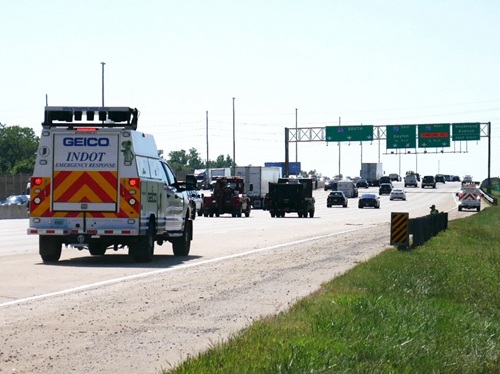The U.S. Department of Transportation and Transport Canada issued a joint statement on February 25 committing both agencies to “reinvigorate our bilateral cooperation” to fight climate change and limit the environmental impacts from their respective national transportation networks on land, air, and sea.
[Above photo: Transport Canada’s Omar Alghabra at left, USDOT Secretary Pete Buttigieg at right.]
The announcement supports the recent Roadmap for a Renewed U.S.-Canada Partnership cemented by President Joe Biden and Prime Minister Justin Trudeau and reinforces the bilateral Memorandum of Cooperation on “Transport Matters of Mutual Interest” signed in 2016.

“We will work together to accelerate policy actions that help our transport sectors grapple effectively with the climate challenge,” USDOT Secretary Pete Buttigieg and Omar Alghabra, Canada’s minister of transportation, in their joint statement.
“A healthy environment and economy support the goals of both countries to ‘build back better’ from the COVID-19 pandemic, and leverage actions at the state, provincial, territorial and local levels,” they said.
The broad based agreement covers a variety of modes and transportation activities:
- On roads, the agreement commits both agencies to work toward a zero-emission vehicle future through “ambitious” vehicle standards to improve fuel efficiency and reduce greenhouse gases or GHGs from light-duty and heavy-duty vehicles. That includes efforts to help accelerate the achievement of 100 percent zero-emission vehicle sales for light-duty vehicles and increase the supply of and demand for zero-emission medium- and heavy-duty vehicles.
- Exploration of “best practices” on how to help incentivize the installation of electric charging stations, and refueling stations for clean fuels, including through the ongoing coordination of electric and alternative fuel corridors and the alignment of technical codes, standards and regulations, to enable the seamless transportation of people and goods. This includes collaboration on new “innovative solutions” to decrease emissions and advance the use of cleaner fuels in rail transportation.
- On aviation, the agencies plan to working towards reducing the sector’s emissions in a manner consistent with the goal of net zero emissions for both the U.S. and Canadian economies by 2050. That includes advancing the development and deployment of high integrity sustainable aviation fuels and other clean technologies that meet rigorous international standards.
- Both agencies plan to forge new partnerships with the International Civil Aviation Organization (ICAO) and the International Maritime Organization (IMO) to reduce GHG emissions. With ICAO, they plan to advance a new “long-term aspirational goal” for decarbonizing the aviation sector and continue participating in the Carbon Offsetting and Reduction Scheme for International Aviation or CORSIA. With the IMO, the plan is to cut emissions from ships in half by 2050 compared to 2008 levels. That includes spurring the use of cleaner, sustainable, and renewable fuels in ocean shipping and banning the use and carriage of heavy fuel oil as fuel in the Arctic
- Supporting further development of “green transport infrastructure” along the U.S.-Canadian border, including management of the Great Lakes and St. Lawrence Seaway for maritime navigation needs.
- Exploring how both nations can address and support the transportation infrastructure needs of Arctic and Northern communities, such as safety, climate change, and fostering socio-economic opportunities.
“This new focus on climate will reinforce our already vast cooperation portfolio across all modes of transportation to ensure safe, secure, and efficient transportation networks of today, while preparing for the innovations of tomorrow, and recovering our economies in a way that promotes employment, sustainability and equity,” Buttigieg and Alghabra said.
 Nation
Nation


